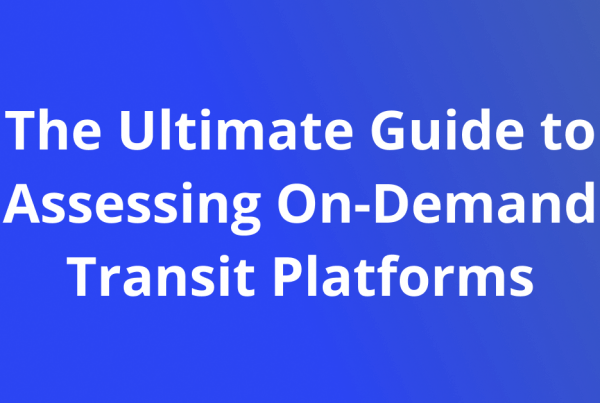Cars have been solving the last mile problem pretty well for the past century, taking people exactly from point A to point B. This is something that public transit cannot do except in the dense urban cores of cities. A bus meandering through a suburban residential or industrial area will not always pass within easy walking distance from where people live or work. Overcoming this “last mile” is why cars are indispensable in those regions. That is until people got smartphones and started sharing their cars.
With the development of rideshare applications being led by the gigantic transportation network companies (TNCs) like Uber and Lyft there are now more ways than ever to solve the last mile problem. A recent paper by Kevin DeGood & Andrew Schwartz from the Center of American Progress approached this topic. They broadly asked if it was possible for new transportation technologies to improve job access and equality. Specifically they thought it might be possible for tailored government subsidies for low-income people living in “transit deserts” to use ride-sharing services provided by private TNCs.
They focused their research on the Atlanta metro area, looking at where there was i nsufficient bus service or linkages to the rail network that could bring people in the outlying suburbs to the city center. Their central premise is that buses do not provide the necessary service and with just a 1% cut in “bus revenue hours” would provide enough money to subsidize a year’s worth of commutes using a TNC. They also note the increased functionality created by: “the mobile applications developed by ridesharing companies would allow a transit agency to set geographic boundaries, bundle multiple subsidized trips together, and process transactions at a fraction of the cost of traditional reimbursement programs.” The hope is that ridesharing technology can provide a necessary service, the last mile solution, at an affordable rate, for both riders and government.
nsufficient bus service or linkages to the rail network that could bring people in the outlying suburbs to the city center. Their central premise is that buses do not provide the necessary service and with just a 1% cut in “bus revenue hours” would provide enough money to subsidize a year’s worth of commutes using a TNC. They also note the increased functionality created by: “the mobile applications developed by ridesharing companies would allow a transit agency to set geographic boundaries, bundle multiple subsidized trips together, and process transactions at a fraction of the cost of traditional reimbursement programs.” The hope is that ridesharing technology can provide a necessary service, the last mile solution, at an affordable rate, for both riders and government.
Some cities have gone even further, slashing their entire bus budget and replacing them with Uber. The city of Altamonte Springs has recently made a deal with Uber where the city will cover 20% – 25% of the cost of Uber trips done inside or into the city. This is quite the upset, Uber is usually a problem for municipalities, not a partner. NPR’s Scott Simon recently interviewed Frank Martz, the City Manager for Altamonte Springs, one of the questions asked was regarding surge pricing, Frank’s answer sums up the logic of this partnership: “I have a very free-market viewpoint on that and I’ve been asked that question. How does the city feel about surge pricing? And my response is in the private sector, if it becomes too expensive to be used, no one will use it and the market will force the price down.” This would make sense when if the service was operating in an actual free market, but that ends as soon as governments start a subsidy program and reduce traditional bus services. What happens if Uber’s prices increase and there are no other options for people to use for public transit? Either the city increases the subsidy or people are priced out of basic transportation.
The current challenge and opportunity faced by public transit operators around the world is that they see a solution for their last mile problem being implemented, but they are not in control of the technology that is making this possible. But that does not mean they should always cede control of their operations to TNCs. There are technology solutions on the market than would allow any transportation operation to become more responsive and efficient in a significant enough way to solve the last mile problem. It would be significant because in order to solve the last mile you have to become flexible, that means taking vehicles off fixed routes something that most public transit operations are unwilling to do. It is important to realize the opportunity. People are willing to pay for this level of service. They will pay private companies or they will pay public transit. Where those dollars end up going depends on what kind of systems are developed in the next few years.
Photo Credits:
Top – Chris Givan – Flickr
Bottom – refreshment_66 – Flickr



